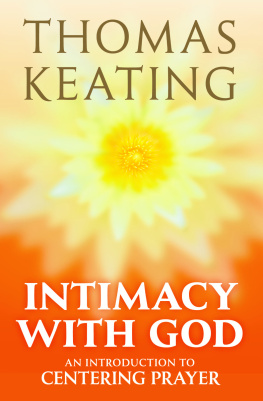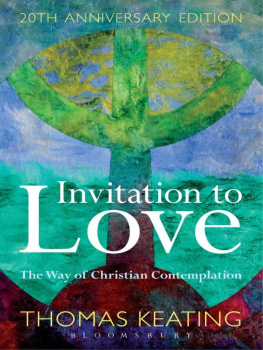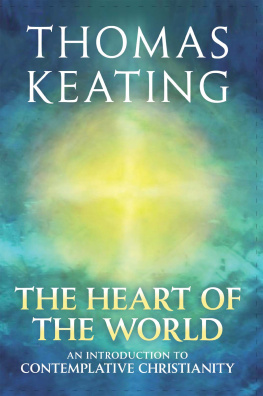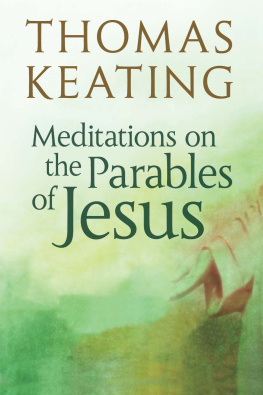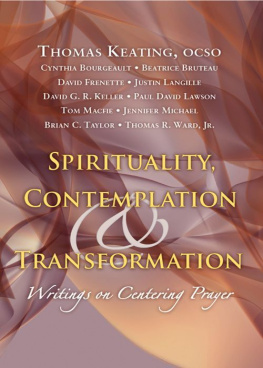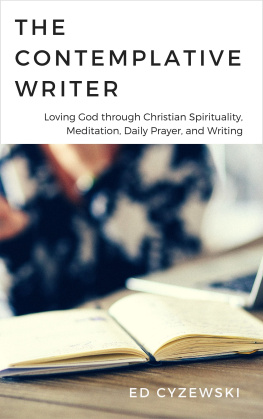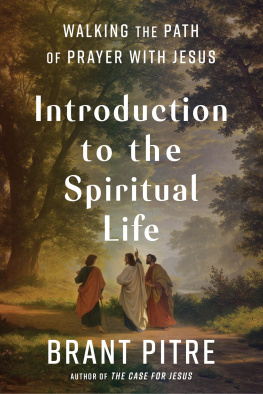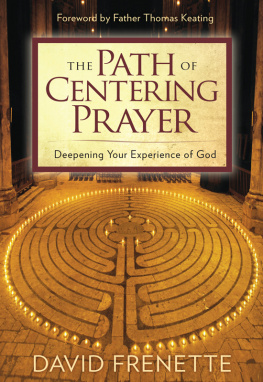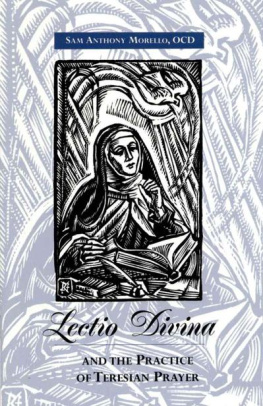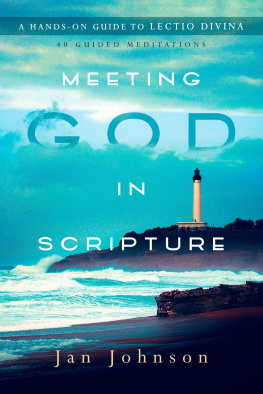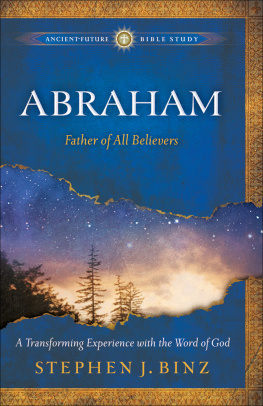
And the Word was made flesh,
and dwelt among us.
John 1:14 KJV
Contents
Some books, like some people, can be pronounced wonderful after only a brief encounter; more meetings simply reinforce our initial judgment. This is that sort of book, an ideal vade mecum for those who desire to retrieve the wonderfulness so often obscured by the distracting demands of our ordinary routines, the sheer dailiness of our daily lives that dulls our spiritual sensitivities. Here then is the wake-up call we need to seize the day once again by attending to the promptings within our hearts and allowing the most gentle of companions to accompany us through it.
The books structure is both simple and elegant. Each days text begins with a line of prayer, a prayer sentence that acts as both a theme and an invitation. Each closes with an appropriate, longer citation from Scripture that is a Biblically based recapitulation of the theme. In between lies a short reflection to inspire meditation, each an excerpt from the writings of the Cistercian monk, Father Thomas Keating, a noted retreat master and founder of the Centering Prayer Movement and of Contemplative Outreach. Father Keatings comments will reassure those who are a bit frightened by the heady altitudes erroneously associated with contemplative prayer; and his sensible suggestions, firmly rooted in the rich tradition of the great Catholic mystics like Teresa of Avila and John of the Cross, will remind us that prayer is not work, but an attentive waiting followed by surrender.
So the words in this book are few and meant merely to be supportive. They have been specifically chosen to encourage a spiritual silence and to create an interior space in which the voice of the Spirit might whisper and find echo within the innermost chambers of ones self. Such words make for a wonderful book.
GEORGE W. HUNT, S.J.
My deepest gratitude and thanks go to:
Father Thomas Keating and The Continuum Publishing Company for their support of my idea and permission to use Father Keatings materials and agreement to publish the finished project.
My family for their confidence in me and their unselfish sharing of their talents. This includes my fiction- and newspaper-writer husband, Michael, for his deep love, affection, and encouragement; my son and scholar Michael for his attention to detail and insights into Scripture; my daughters, Stephanie and Martha, for their editing expertise; and my son Charles for his technical assistance.
My friend and mentor Grace Shaw for her guidance emanating from her successful career as an editor for a major New York publishing company. Her advice and encouragement were crucial, especially in the early doubt-filled days.
My sisters on this contemplative journey, Diane Harkin and Jane Byrne who prayed for me without ceasing.
My friends in Contemplative Outreach for their love, prayers, and insights into spiritual writers and Scripture.
Marianne Lacy and the late Father Peter McCall and other faith-healing members of the House of Peace who loved me and prayed with me for health of body, mind, and spirit and for the successful completion of this book.
Sister Winifred Danowitz, an Ursuline nun from the College of New Rochelle, mentor and long-time friend, whose common-sense approach to life and unwavering support and belief in me helped motivate me in moments of doubt.
My friend and mentor Ann Clemente for financial assistance during the early formative stage of the project.
For the contemplative living programs made available by Cathy McCarthy and Contemplative Outreach staff at St. Andrews Retreat House in Walden, New York, which gave direction to my search for a closer relationship with God.
And most of all, I am grateful to God for planning it all!
Like many of you, I lead a full active life, seek a closer relationship with God, and am committed to a contemplative lifestyle. In addition to my two daily periods of Centering Prayer, I often found myself wishing for easily accessible written spiritual nourishment to complement that practice.
The idea of compiling a daily reader grew out of this desire. I wanted to combine the richness of a contemplative anthology with the convenience of a compact reader small enough to fit in a purse, briefcase, or beside ones bed.
The Daily Reader for Contemplative Living ties together thematically three contemplative living prayer practices: an active prayer, a reading from a spiritual writer, and a reading from Sacred Scripture. The brief introductory prayer sentences (active prayers) are either from Scripture, traditional prayers of the church, quotes from well-known spiritual writers, or from my own personal experience. All of the short meditations here (spiritual readings) are excerpts from one of the works of Father Thomas Keating, a pioneering Cistercian monk, dedicated to the spread of the ecumenical contemplative prayer movement. Each days entry closes with a selection from the Bible. I draw the Scripture from both Christian and Judaic texts. Sacred Scripture comes last to give the reader the opportunity to move easily into the prayer practice of Lectio Divina reflecting on Scripture and finally resting with Gods Word.
Each month features excerpts from one of Keatings works. For example, January focuses on excerpts from his book Open Mind, Open Heart, and September offers excerpts from his audiotape Who Is God? The appendix contains The Essentials of the Centering Prayer Method, reprinted from Open Mind, Open Heart. Indexes include biblical references, subjects, quotations, and active prayer sentences.
Who exactly is Thomas Keating and why would anyone be interested in what he has to say?
Thomas Keating, Order of Cistercians Strict Observance (O.C.S.O.), is a Trappist monk and former abbot of St. Josephs Abbey in Spencer, Massachusetts. He currently resides at St. Benedicts Monastery in Snowmass, Colorado, where he gives intensive ten-day retreats on Centering Prayer. Keating is a founder of the Centering Prayer Movement and of Contemplative Outreach a worldwide spiritual network of individuals and small faith communities that supports the practice of Centering Prayer. Keating has addressed international audiences, spoken at the Harvard Divinity School, and conducted retreats worldwide. He is regarded as a pioneer in the widespread renewal of the contemplative dimension of the Gospel.
In his book Open Mind, Open Heart, Father Keating writes: Christian Contemplative Prayer is the opening of mind and heart our whole being to God, the Ultimate Mystery, beyond thoughts, words and emotions, whom we know by faith is within us, closer than breathing, thinking, feeling and choosing; even closer than consciousness itself. The root of all prayer is interior silence.
Father Keating advocates Centering Prayer as a method of prayer that prepares one to receive the gift of Contemplative Prayer. He describes Centering Prayer as both a relationship and a discipline a relationship of communion with God and a discipline to facilitate this relationship. Centering Prayer makes use of a sacred word that is designed to lead into silence and is a symbol of ones intention to consent to Gods presence and action within. The individual selects a sacred word one to two syllables, e.g., Jesus, God, Love, Joy and introduces it on the level of the imagination. Says Keating, Gently place it in your awareness each time you recognize you are thinking about some other thought. Keating does not discourage thoughts. He does
Next page

